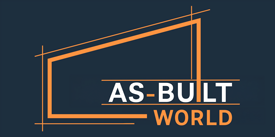The Benefits of Laser Scanning in the AEC Industry
The Architecture, Engineering, and Construction (AEC) industry is no stranger to innovation, but one technology that’s truly revolutionizing the field is laser scanning. If you’ve been hearing the buzz but aren’t sure what all the hype is about, this article is for you. Let’s explore why laser scanning is a game-changer and how it’s boosting efficiency across the board.
What Is Laser Scanning?
Laser scanning, also known as LiDAR (Light Detection and Ranging), is a technology that uses lasers to capture highly accurate measurements of physical spaces. Devices like the Matterport Pro3, NavVis VLX, or FARO Focus create detailed 3D models, or “point clouds,” that replicate real-world environments. These models can then be used for design, construction, maintenance, and more.
Why Laser Scanning? The Key Benefits
1. Accuracy Beyond Compare
Laser scanning captures measurements with millimeter-level precision. This level of detail ensures:
Reduced errors in design and construction.
More accurate as-built documentation.
Seamless integration into Building Information Modeling (BIM) workflows.
2. Time Savings
Traditional surveying methods can take days or weeks, but laser scanning dramatically cuts down this time. For example:
A commercial building scan can be completed in hours, not days.
Faster data collection allows project teams to focus on problem-solving and execution instead of endless measurements.
3. Cost Efficiency
While the initial investment in laser scanning equipment or services may seem steep, the long-term savings are undeniable:
Fewer errors lead to fewer costly change orders.
Reduced on-site labor costs.
Faster project timelines mean less money spent on overhead.
4. Improved Collaboration
AEC projects often involve multiple stakeholders—architects, engineers, contractors, and clients. Laser scanning facilitates collaboration by:
Providing a single source of truth in the form of a 3D model.
Allowing teams to visualize and plan projects in real-time.
Reducing miscommunication with highly detailed and shareable data.
5. Enhanced Safety
Safety is a top priority in the AEC industry, and laser scanning can help mitigate risks by:
Reducing the need for personnel to physically access hazardous areas.
Identifying potential issues, such as structural weaknesses, before they become dangerous.
Allowing remote monitoring of project sites.
Real-World Applications
Renovations and Retrofits
Renovating older buildings can be tricky due to missing or inaccurate blueprints. Laser scanning eliminates guesswork by providing an up-to-date, accurate representation of the building.
Infrastructure Projects
For bridges, highways, and other infrastructure, laser scanning ensures that even large-scale projects are mapped with precision. Engineers can use these models to identify wear and tear, plan repairs, and optimize future designs.
Construction Progress Monitoring
Laser scanning allows project managers to compare the construction progress to design plans. This real-time comparison ensures that projects stay on track and within budget.
Getting Started with Laser Scanning
If you’re ready to embrace the benefits of laser scanning, here’s how to get started:
Choose the Right Equipment: Devices like the NavVis VLX or FARO Focus offer different features for different needs.
Train Your Team: Familiarize your team with laser scanning tools and software for seamless integration.
Partner with Experts: Not ready to invest in equipment? Consider hiring a professional laser scanning service.
The Bottom Line
Laser scanning is no longer a luxury in the AEC industry; it’s a necessity. By offering unparalleled accuracy, time and cost savings, and improved safety, laser scanning is transforming how projects are planned and executed. Whether you’re an architect, engineer, or contractor, embracing this technology can propel your projects to the next level.
So why wait? Dive into the world of laser scanning and discover the efficiency, precision, and innovation it brings to the AEC industry.
References

